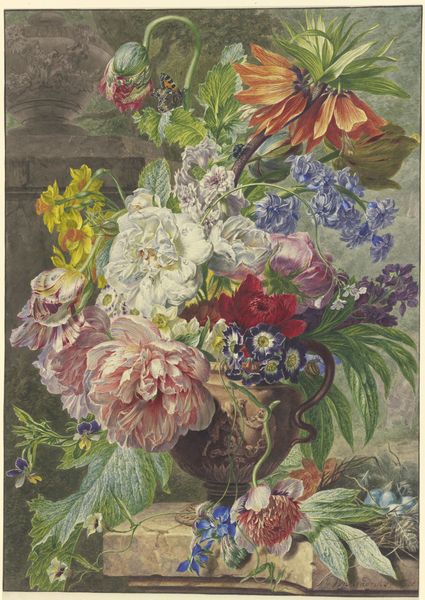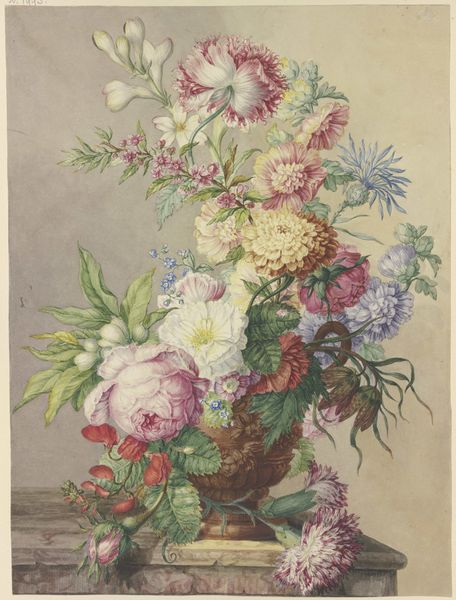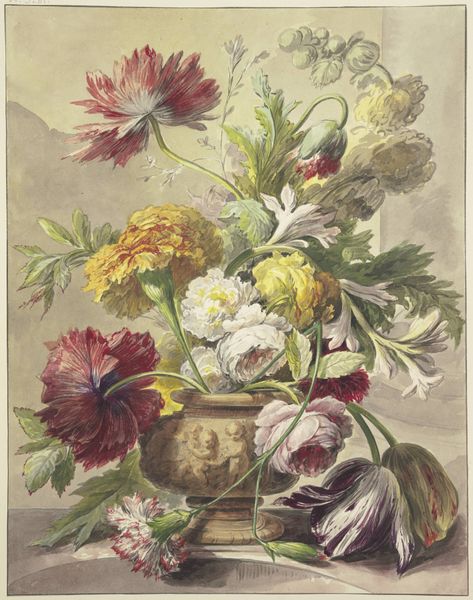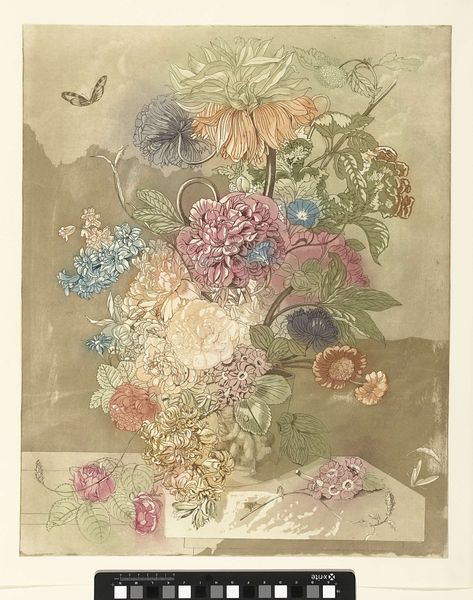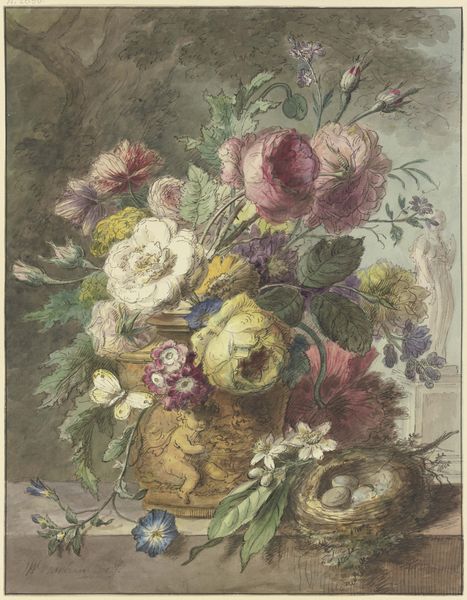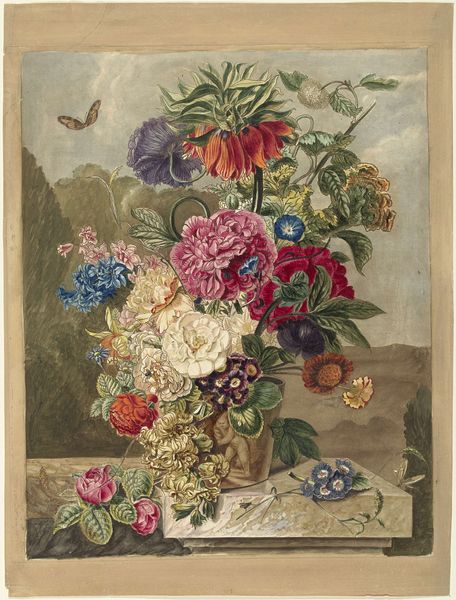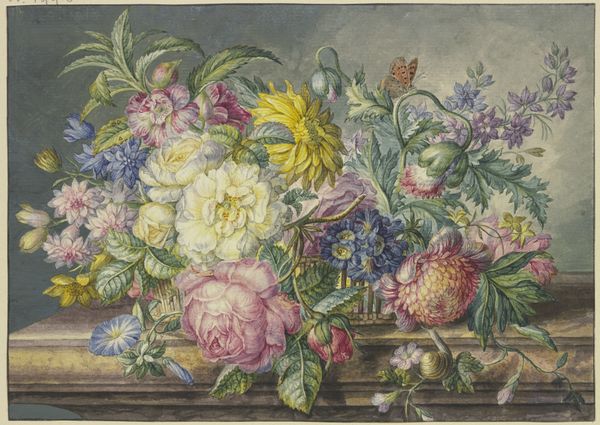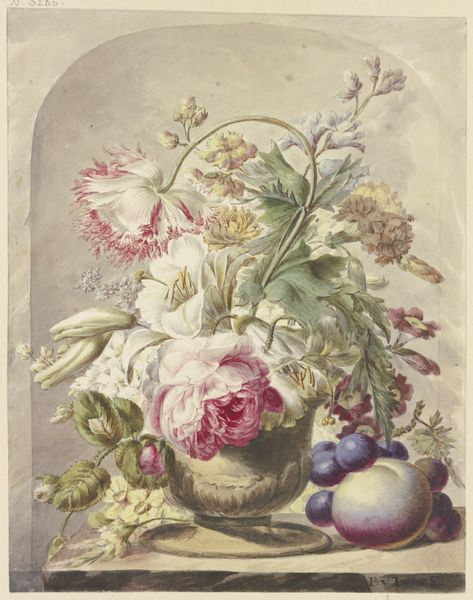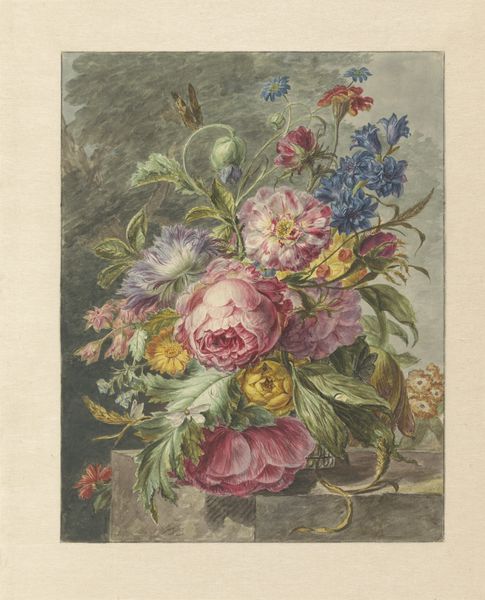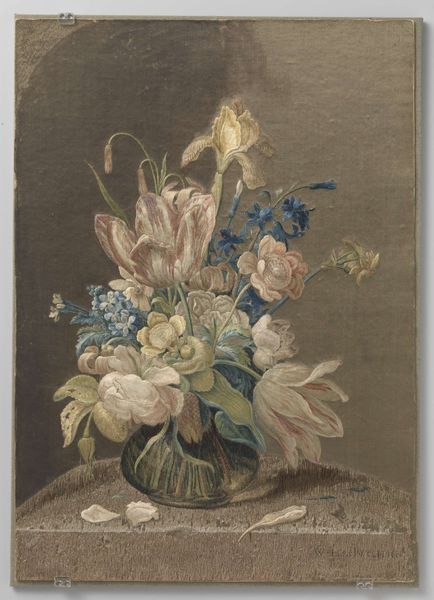
plein-air, watercolor
#
plein-air
#
oil painting
#
watercolor
#
romanticism
#
watercolour illustration
#
watercolor
Copyright: Public Domain
Curator: This watercolor illustration, "Blumenstrauß, dabei ein Vogelnest mit Eiern," which translates to "Bouquet with a Bird's Nest with Eggs," captivates with its delicate rendering of nature. It's housed here at the Städel Museum. Editor: My first impression is how ethereal and slightly melancholic it feels. The muted colours and the softness of the brushstrokes give it a dreamy quality, and that bird's nest juxtaposed against the flowers hints at life's fragility. Curator: Considering the materials, the use of watercolor allows for such a fluid and luminous effect. Think about the artisanal process. Watercolor demands a precise technique, a true mastery of material that elevated "craft" into the realm of fine art at the time. Editor: And the social context is essential. These floral still lifes gained immense popularity in the 18th and 19th centuries. Botanical illustration, a rising genre fuelled by scientific expeditions and exploration, often found itself celebrated in the burgeoning middle-class art market. Curator: Precisely. These detailed paintings served a dual purpose. Yes, it was a commercial pursuit but also it provided a display of affluence with depictions of these sought after blooms. Each pigment painstakingly applied by hand, elevating nature to a spectacle of consumption and luxury. Editor: I’m also wondering about the setting in which something like this would have originally been displayed and viewed. Perhaps hung salon-style, or even reproduced as prints and shared amongst women of leisure engaged in botany and other similar genteel pursuits. The painting gains significance knowing it was circulating within specific social spheres and playing an active role within that system of visual consumption. Curator: A thoughtful point! We should acknowledge that an arrangement such as this would depend on specialized markets and knowledge—not only access to the subjects being rendered in watercolour, but the paper itself. Editor: Ultimately, what resonates with me most is its quietly powerful representation of the ephemerality of beauty and existence. It transcends mere representation. Curator: Yes, I think the painting beautifully intertwines the natural, the fabricated, and the social. Editor: It allows us to contemplate a period in which our relationship with nature was actively curated by systems of both economics and artistic creation.
Comments
No comments
Be the first to comment and join the conversation on the ultimate creative platform.

